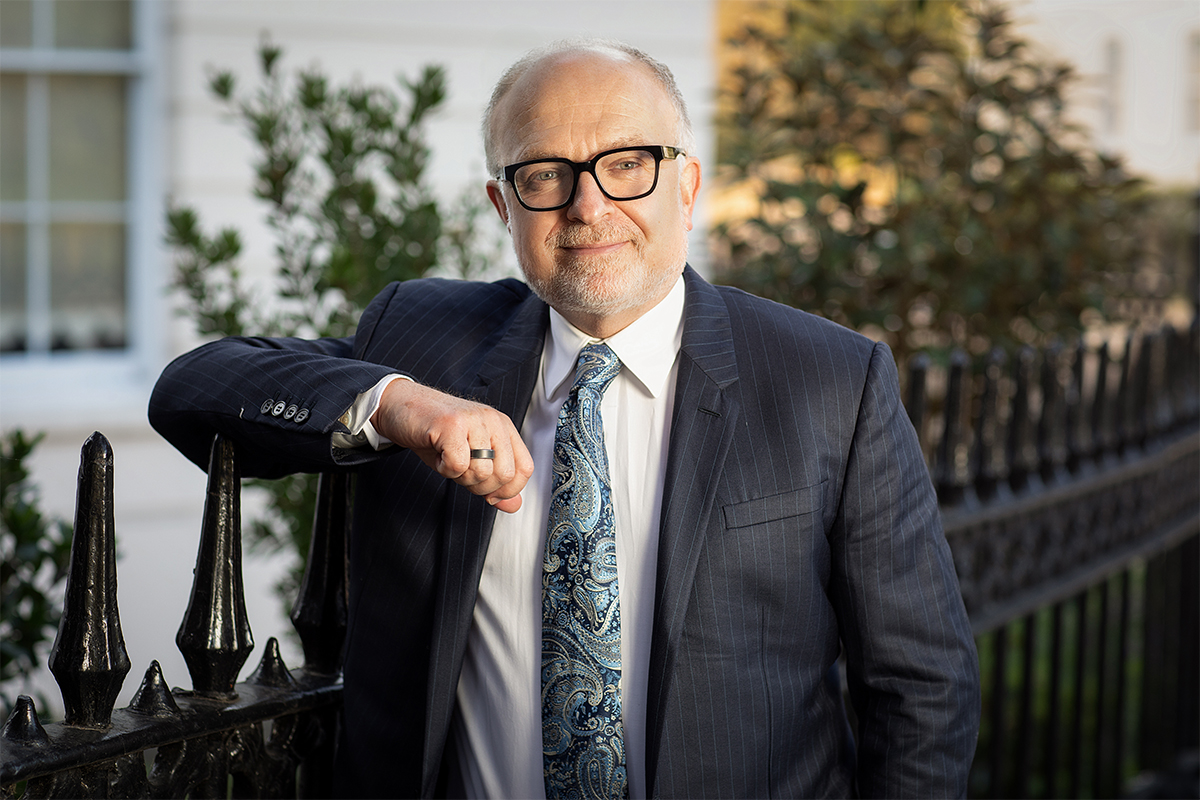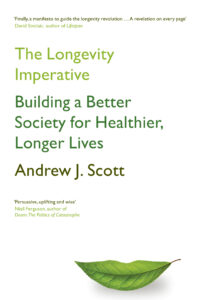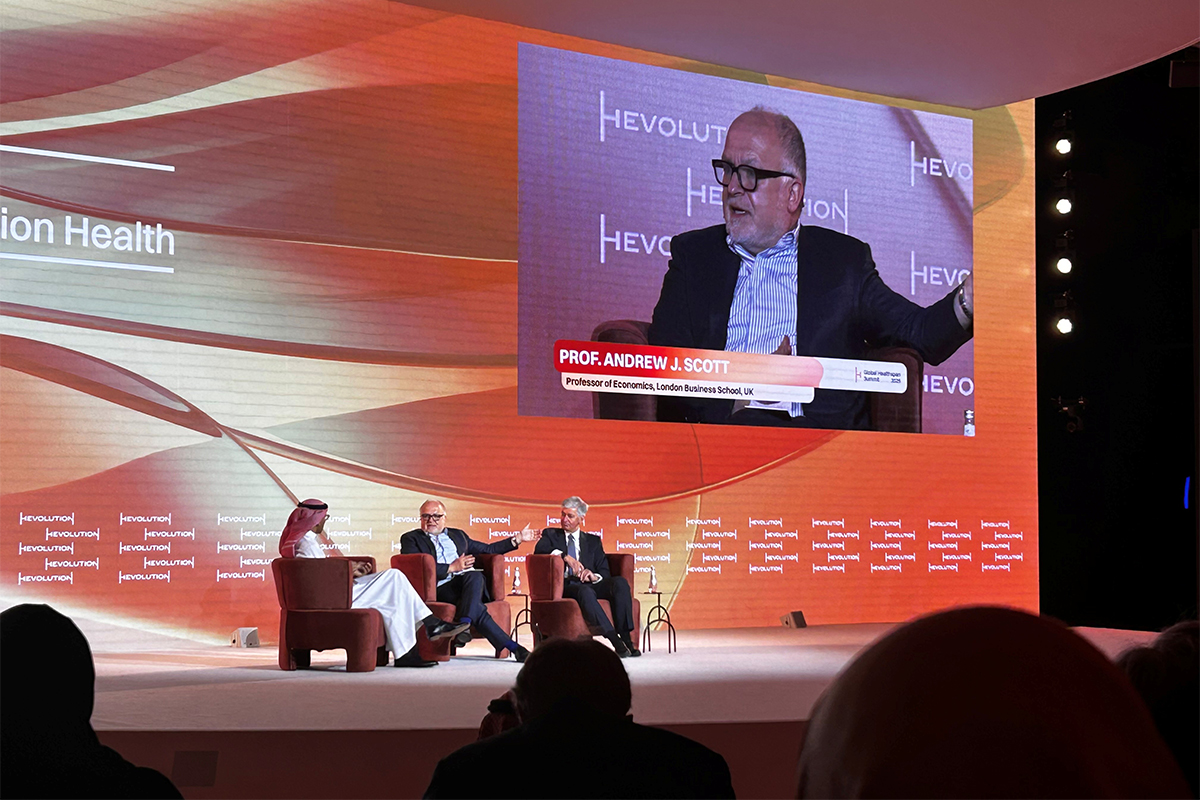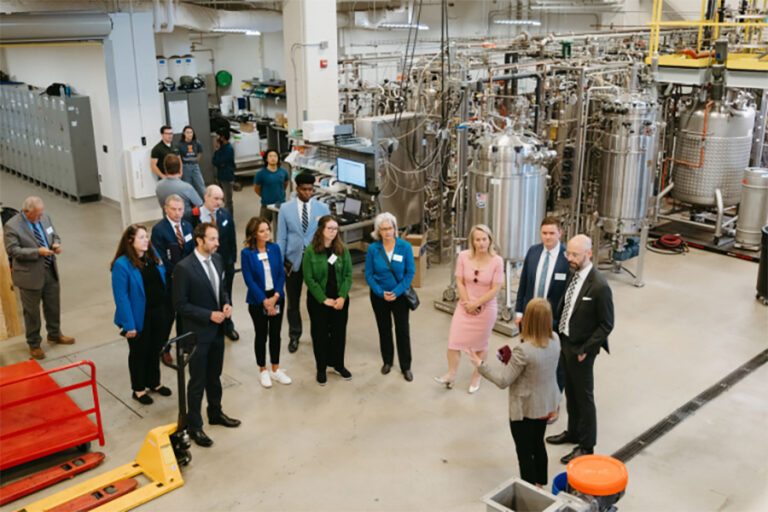
The traditional approach to healthcare is a ticking economic time bomb. Governments worldwide are spending staggering amounts treating diseases that stem from aging, yet they continue to sidestep a far more cost-effective solution: investing in healthspan.
The numbers are brutal. In the U.S. alone, the annual cost of treating Alzheimer’s disease exceeds $300 billion, while cardiovascular diseases and diabetes each drain hundreds of billions more from national budgets². And that’s before factoring in lost productivity and reduced economic participation. Andrew Scott, professor of economics at London Business School and co-author of The 100-Year Life and The Longevity Imperative, argues that we have been looking at the problem the wrong way. Instead of seeing an aging society as a burden, we should recognize the economic opportunity in keeping people healthier for longer.
Scott has spent much of his career examining monetary and fiscal policy, but healthy longevity economics has become his defining passion. His work is clear: societies that fail to adapt to longer lives will face dire consequences, while those that embrace healthspan as an economic asset can unlock immense potential. Speaking at the Global Healthspan Summit in Riyadh, he made the case that we are no longer just extending life expectancy—we are at a crossroads where we must change how we age. “We keep people alive for longer, but we’re not keeping them healthy.”
This is where Hevolution comes in. The Riyadh-based nonprofit has a budget of up to $1 billion annually to accelerate breakthroughs in geroscience, drug development, and preventative healthcare. Its vision aligns precisely with Scott’s: shifting from a reactive healthcare model to one that prioritizes proactive interventions. The economic implications are enormous. Scott has previously calculated that increasing U.S. life expectancy by just ten years could generate an economic benefit of $367 trillion. But more importantly, extending healthy life expectancy—keeping people productive and engaged—could transform workforce dynamics and reduce the immense financial strain of age-related disease.
“Longevity isn’t just about adding years to life—it’s about adding life to years.”
Andrew Scott, professor of economics, London Business School
The problem, Scott argues, is that policymakers tend to frame aging as a crisis rather than an opportunity. Economists have long warned of the “demographic time bomb” and the rising dependency ratio, painting a bleak picture of a shrinking workforce struggling to support an ever-growing elderly population. But Scott’s analysis suggests a different reality: if governments invest in keeping people healthy for longer, the benefits far outweigh the costs. The focus should not be on how many years we live but on how well we age. “If you think about it in economic terms, someone who is 50 with a life expectancy of 70 is very different from someone who is 50 with a life expectancy of 90. That changes everything—it means you have more incentive to invest in your future,” he explains.
One of the biggest barriers is the outdated structure of healthcare itself. Most systems are designed to treat disease after it has already taken hold, rather than preventing it in the first place. “We have a health system based around intervening,” Scott pointed out at the summit. “Intervening when you have age-related diseases is not good. It doesn’t maintain health.” The solution, he suggests, lies in a massive pivot towards preventative health—one that requires fundamental changes in public policy, taxation, and investment. This means everything from shifting healthcare out of hospitals and into the community to implementing stronger regulatory incentives that encourage pharmaceutical companies to prioritize healthspan-enhancing therapies over last-ditch end-of-life treatments.

Scott’s concept of an “evergreen” society, as explored in The Longevity Imperative, presents a radical but necessary rethinking of economic structures. He argues that the modern economy was built on the assumption that most people would work until their 60s, retire, and then rely on state support for a decade or two. That model no longer works. With global life expectancy rising past 70 and many people now expected to reach their 90s, we need a new framework that accommodates healthier, longer working lives. This includes creating more flexible employment structures, designing policies that encourage lifelong learning, and reshaping pension systems to reflect the realities of extended healthspan.
At the Global Healthspan Summit, Scott pointed to one simple but often-overlooked economic factor: employment rates among older adults. In the U.S., if participation rates among 50-to-65-year-olds matched those of their younger counterparts, it would add 8 million workers to the economy—boosting GDP by an estimated 5%⁵. The economic argument for healthspan is not just about reducing healthcare costs; it is about maximizing human capital. And that is precisely why Hevolution’s investment strategy is so crucial. By funding cutting-edge research in aging biology, metabolic health, and regenerative medicine, the foundation is actively working to increase healthspan—instead of extending the number of years we spend in poor health, we extend the number of years we remain healthy and productive.
This shift requires more than just government intervention. Scott emphasizes that individuals also need to rethink their approach to aging. “You need to be more friendly to your future self,” he explains. That means making conscious investments in health, financial security, and social connectivity earlier in life. It means recognizing that traditional career trajectories may no longer apply and that skills training and adaptability will become even more important as people live and work for longer. It also means breaking away from the outdated notion that old age is a time of decline rather than reinvention.
As Scott sees it, we are at the beginning of a second longevity revolution. The first revolution was about extending life expectancy. The second is about ensuring that those extra years are healthier and worth living. And in that transition lies one of the greatest economic opportunities of the 21st century. “Once you start thinking about what makes a good life and how to make it longer and better, it’s hard to think of anything else,” he says. If governments, businesses, scientists, healthcare practitioners, and individuals align around that vision, the economics of healthspan won’t just make sense—they will become the defining strategy for the future of global prosperity.









